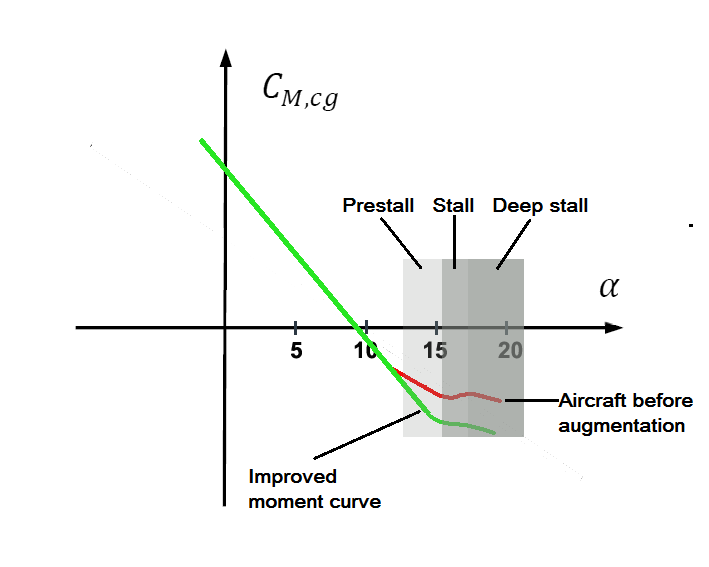Originally Posted by
FCeng84
Pitching moment caused by engine thrust is a function of how much thrust and where the engine is mounted vertically with respect to the center of gravity. Thrust pitching moment is not a function of how far forward or aft the engine is located. With this in mind, the nose up thrust induced pitching moment generated by the 737MAX engine is not greater than that for a 737NG. In fact, it is probably less as the center line of the larger MAX engine is higher than the center line of the smaller NG engine given their respective attachment geometries.
Hopefully it is now clear that the pitching moment of concern with the 737MAX engines that gives rise to the need for MCAS is related to the aerodynamic impact of the engine cowling location and geometry, not the magnitude nor location of the thrust vector generated by those engines.
To add a bit to this good explanation, Bjorn at Leeham news (who wrote a very good explanation of MCAS after Lionair) has a good followup that is available by googling "Bjorn's corner: Pitch stability, Part 10. Wrap up". (The previous parts are worth reading also). He is suggesting the augmented versus augmented MAX Cm (moment coefficient) versus alpha (AoA) curve would likely look similar to the one below. These curves are easy to interpret, a stable aircraft has a negative sloped curve where the pitching moment coefficient decreases as AoA increases. The interesting thing is that the unaugmented aircraft transitions between stable and less stable during prestall (and is never neutral or unstable), but the discontinuity is the problem. Although the aircraft still requires an increase in pull force to further increase AoA (It won't start increasing AoA by itself with no further pull at constant thrust), it will feel easier for the pilot than in the NG to get from pre-stall to stall.
 Figure 1. A thought pitch moment curve for Boeing’s 737 MAX. Source: Leeham Co.
Figure 1. A thought pitch moment curve for Boeing’s 737 MAX. Source: Leeham Co.